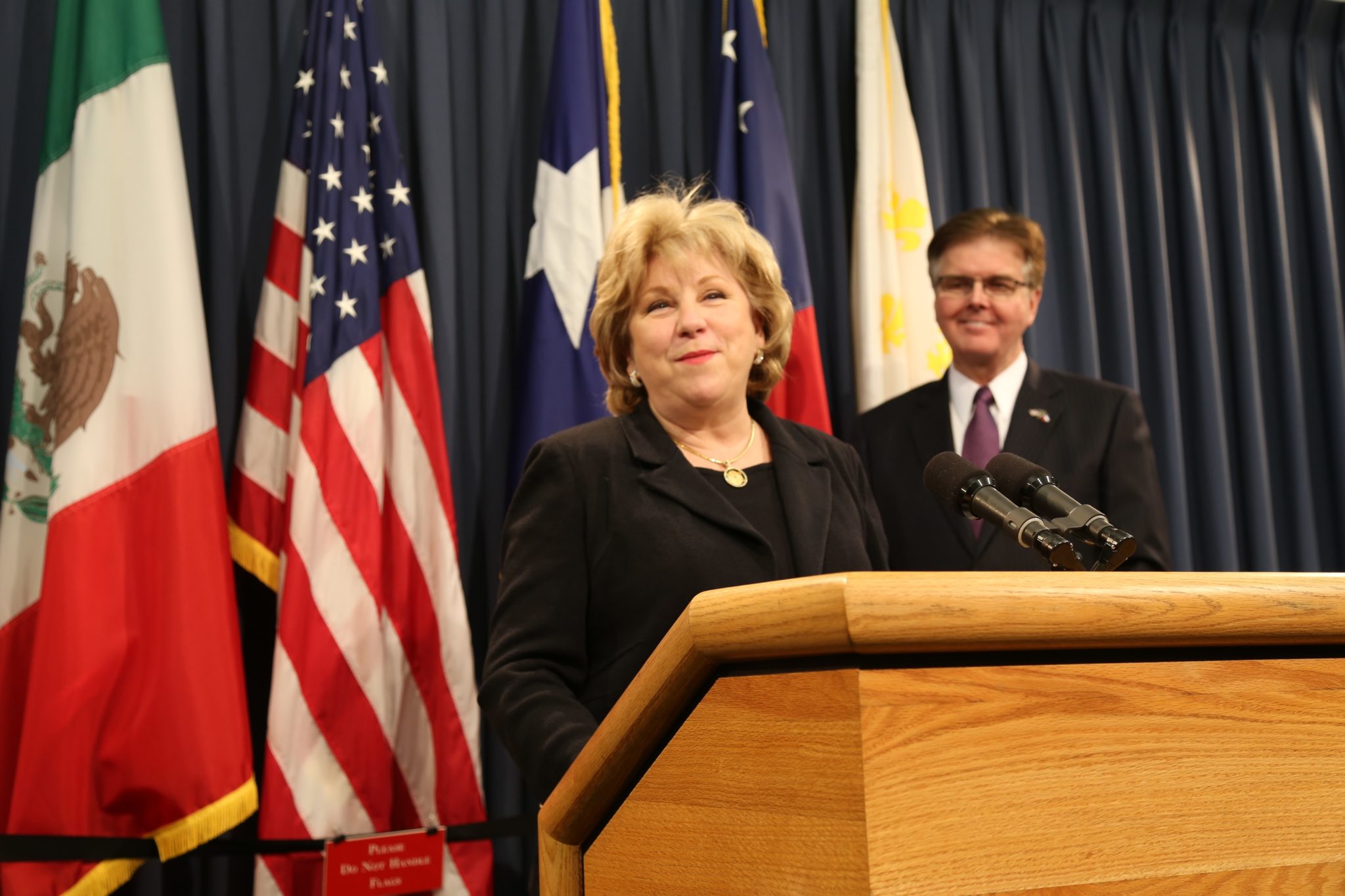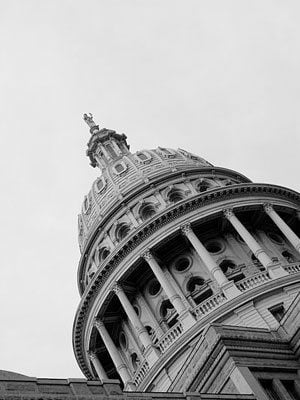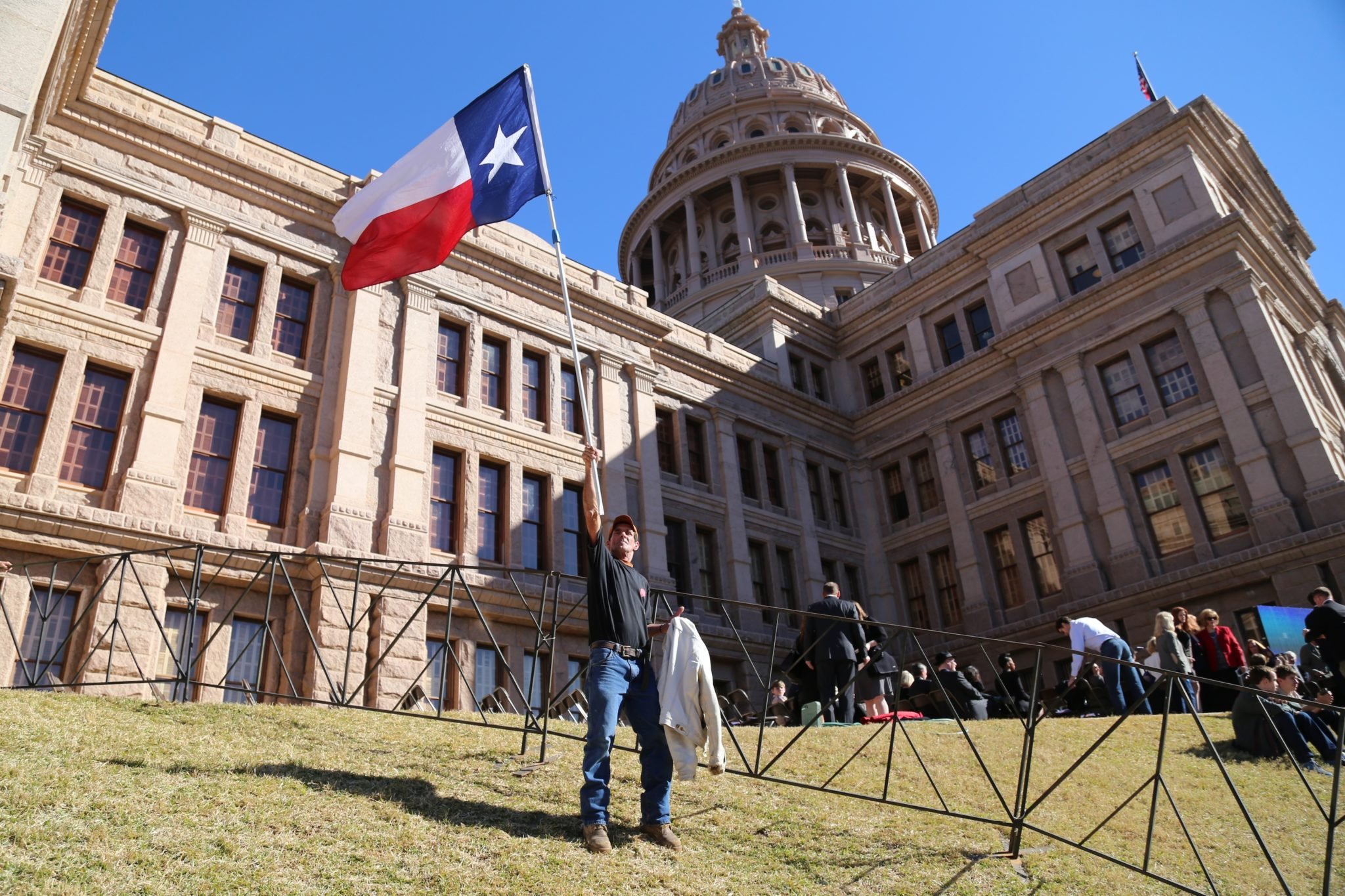
Dan Patrick and Jane Nelson Release Tax-Cut Heavy Budget
Above: Senate Finance Committee Chair Jane Nelson and Lt. Governor Dan Patrick released the first draft of the Senate's budget plan Tuesday morning.
Lt. Gov. Dan Patrick and Senate Finance Committee Chair Jane Nelson released the first draft of the Senate’s budget plan Tuesday morning, outlining a proposal which places a heavy emphasis on tax cuts and transportation funding. Nelson’s budget, she told reporters in her characteristically upbeat manner, was “compassionate” yet fiscally restrained, a document that would “create a Texas miracle tomorrow that will surpass the Texas miracle of today.”
In pursuit of that “miracle” the Senate has drawn up a $205.1 billion budget for 2016-2017, up 1.5 percent from the previous biennium’s $202 billion budget. The House’s budget proposal, released the first week of the session, was just $202.4 billion.
The Senate’s proposed budget is higher than the House budget in part because it includes $4 billion in tax cuts—$3 billion of property tax cuts and $1 billion of cuts to the franchise tax, Texas’ business tax. “We have an obligation to return a large share of dollars to the people that worked hard and gave us that money in the first place,” Nelson said.
Patrick and Nelson talked about the need to restrict property tax growth—the tax is levied by localities, not the state—but the Senate budget attempts to compensate by giving more state aid to school districts.
After talking up the budget’s approach to taxes, transportation and border security, Nelson rounded to the topic of public education, which she said “is a priority for us.” The Senate budget actually adds about $2.5 billion to public education, but that’s only to compensate for an expected enrollment increase of 83,000 students—in other words, there’s no attempt to return to the level of school funding that existed before 2011’s enormous cuts.
Eva DeLuna Castro, a policy analyst at the left-leaning Center for Public Policy Priorities, says that proposed education funding is still “way lower” than what is needed to carry out standardized testing and curriculum requirements.
The Texas Department of Transportation fares better. Through a number of funding sources, including 2014’s Proposition 1, which diverts money from the Rainy Day Fund to the State Highway Fund, Nelson said an additional $5 billion over the biennium would be made available to TxDOT, allowing the agency to jump-start new construction projects. That might be too optimistic. According to Castro, TxDOT has said that it needs $8 to $10 billion over the biennium just to maintain the present level of congestion and keep up with current projects.
As part of that increase in funds for TxDOT, Nelson’s budget eliminates diversions from the gas tax, which has been used, in recent years, for the budget of the Department of Public Safety. Money for DPS will now have to come from general revenue. There’s also a one-time $1.2 billion infusion for TxDOT from motor vehicle sales taxes, which normally feed into the rest of the state’s budget.
The budget proposal also allocates $2.6 billion for mental health programs. This is the same as last year’s budget, although Nelson noted that certain programs that fall under the mental health umbrella would see an increase in funding. Texas is spends less money on mental health services than nearly every other state in the country.
The budget also allocates $815 million for border security—a significant increase from previous years, and more than double what was in the House’s proposal. It adds $60 million for graduate medical education and $50 million for women’s health.
Nelson’s committee will begin its deliberations on the base budget tomorrow morning, before the House has even formed its committees. The early start on appropriations is one way Patrick’s Senate is hoping to get a jump on the less-conservative House.
At the press conference today, Patrick said he was front-loading the Senate calendar to avoid chaos as the Lege winds down months from now. But it also serves to put his priorities first in line.
The House budget proposal, released two weeks ago, more or less punted on the tougher budgetary questions, keeping spending roughly flat in most areas. The tax cuts Nelson and Patrick are proposing will be driving much of the Legislature’s conversation about the budget going forward.
At the start of the press conference, Patrick teased a tardy reporter who said he’d been over by the House chamber. “Why?” Patrick asked. “This is where the action’s gonna be this session.”
If you want to follow along at home, Nelson’s budget bill is Senate Bill 2. Later, Nelson will file Senate Bill 1, legislation that will deal with the specifics of cutting property taxes, Patrick said.


